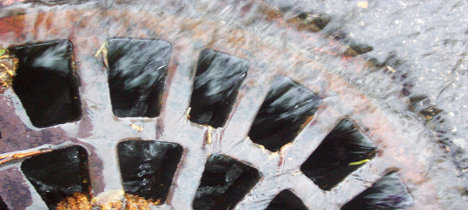By Stephen Vance, Staff

The results of an Inflow and Infiltration study into Meaford’s waste-water system were presented to council at their April 13 meeting, and there is a lot of work ahead for the municipality.
“The completion of the Inflow and Infiltration (I&I) study has pinpointed a number of problem areas that require substantial rehabilitation and reconstruction,” advised Director of Operations Stephen Vokes in his report to council. “The report suggests that $665,000 is required to deal with sanitary deficiencies. These costs will be levied through the waste-water user fees. As well, there will be costs associated with rehabilitation of the road, curb, and sidewalks during any repairs which are a tax levy responsibility.”
Vokes said in his report that additional funding will need to be found starting with the 2015 budget, as the projected costs exceed what is included in the existing road preservation model.
Of particular concern to Vokes are illegal connections to the municipal storm-water system.
“More importantly, the study concludes that much work will need to be done to deal with storm water infiltration. Long-range plans will need to be developed to ensure that the best return on investment is generated with the use of tax- and user-pay dollars. A storm water management plan will determine overall costs and plausible next steps,” read Vokes’s report.
Vokes said that inflow enters the waste-water collection system through illegal storm-water connections, rooftop drains, poor plumbing, and other direct inputs. Infiltration is groundwater that enters the waste-water system through damaged pipes, poor connections, or other deteriorated infrastructure such as maintenance hatches.
“Inflow associated with the connection of eavestroughs, sump pumps, roof top drains, and leaky maintenance hatch covers in various locations within the system, and is generally contained within the older parts of the urban area,” Vokes advised.
While the $665,000 in anticipated costs is a significant amount, Vokes told council that addressing the inflow and infiltration issues would delay the need for upgrades to Meaford’s waste-water treatment plant for 20 years.
“The reduction of inflow and infiltration from the waste-water collection system has the potential to delay the need for the expansion of the Meaford waste-water treatment plant, as well as reduces the costs associated with treating the storm water that is generally associated with inflow and infiltration,” said Vokes in his report.
Vokes told council that illegal connections can be confirmed with smoke testing – an injection of non-hazardous smoke into the waste-water collection system. Properties confirmed to be illegally connected to the municipal waste-water system will have to have those connections removed, and Vokes said that a program will be developed for those removals.
“In addition to the smoke testing program, the municipality will build a database of locations that have improper connection to the waste-water collection system. Over both a short- and long-term period, the Operations Department intends to remove these connections from the collection system, but staff will be mindful in the development of a system that is effective and enforceable, while giving consideration to the financial constraints that this will place on property owners. Staff will complete a review of similar programs in other municipalities and propose a program that suits the municipality and our current situation,” advised Vokes.
He also stressed that many property owners with illegal connections aren’t aware that they are in violation of existing municipal bylaws, however their properties still need to be brought into compliance.
“We suspect that most of the people that are (illegally) connected aren’t aware that they are. So we’re just pointing out that we may get to a point when we need to enforce it. We can’t have it that someone who refuses to cooperate, and then we don’t enforce, and the rest of the people who are willing to cooperate see their neighbour not willing to,” Vokes told council.
Meaford’s Treasurer, Darcy Chapman, impressed upon council the importance of addressing the issue.
“The average daily flow of that waste-water treatment plant when it’s nice and dry in the middle of winter, or middle of summer is 2,600 cubic metres. In the spring and fall during heavy rain, and huge run-off, it can be as high as just over 13,000 cubic metres. So, we’re treating 10,000 cubic metres of rain water. And if we don’t do something about it, it means we are going to have to plan an expansion (of the waste-water treatment plant) a lot sooner than 20 years from now, and we’re talking about $20 million to $30 million,” advised Chapman.











